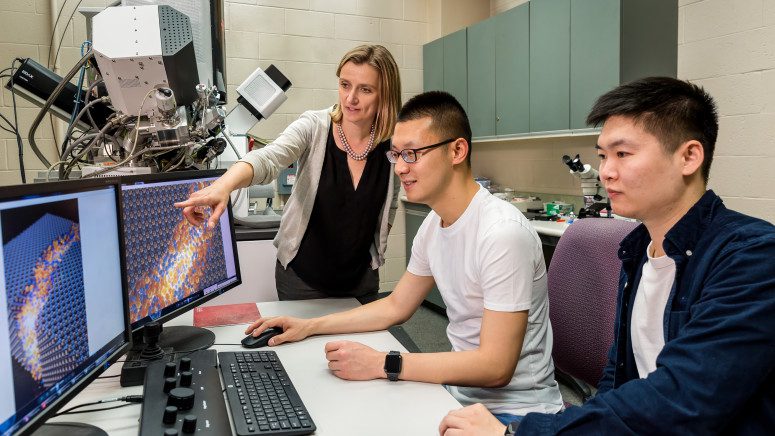29 Jun With sheer determination, researchers can make tough materials that bend without breaking

Professor Izabela Szlufarska (standing), and graduate students Xuanxin Hu (middle) and Nuohao Liu (right) have developed new criteria for determining whether shear bands are beneficial or harmful to certain crystalline materials. University of Wisconsin–Madison
Shear band formation is not typically a good sign in a material — the bands often appear before a material fractures or fails. But materials science and engineering researchers at the University of Wisconsin–Madison have found that shear bands aren’t always a negative; under the right conditions, they can improve the ductility, or the plasticity, of a material.
Led by Izabela Szlufarska, a professor of materials science and engineering at UW–Madison, the researchers published details of their work in the journal Nature Materials.
Using a combination of experimental characterization and simulations, the team identified potential strategies for encouraging shear bands. This could lead to new ways of increasing the toughness of a wide array of materials.
“In a previous paper, we demonstrated that shear bands in a material called samarium cobalt could actually be beneficial,” says Szlufarska. “That led to the questions, ‘When do shear bands form?’ and ‘When do they support plasticity versus fracture? When do you want to avoid them and when do you want to promote them?’”



